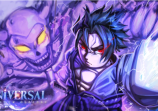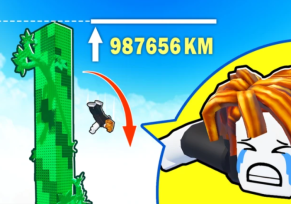The combat in the Gauntlet series was in need of a refresh. Simple mechanics borne from the limitations of the original arcade game carried across decades through the multiple console ports, and yet another title leaning on outdated gameplay might very well have felt stale.
Read Our Metro 2033 Redux Review Here
As such, it's no surprise that Gauntelt feels different from its predecessors. For better and worse, Arrowhead Studios' take on the long-running hack and slash series feels more like a separate game using some of the franchise's elements than another entry in it.
In the past titles, every character played extremely similarly: all of the classes could launch an endless stream of visually altered projectiles, automatically melee enemies you came in contact with, and use a screen-clearing turbo attack. On the console games Gauntlet Legends and Gauntlet Dark Legacy, the Wizard's projectiles, for example, did more damage than the Warrior's, whose melee attack and armor was stronger, but the classes were otherwise aesthetic swaps.
The system is changed entirely in Gauntlet: the four characters (Thor the Warrior, Questor the Elf Archer, Merlin the Wizard, and Thyra the Valkyrie) all play in completely different styles. Each has a unique set of skills, and none but perhaps the Valkyrie and Warrior are even very similar. The two have a standard slash attack which can be spammed against enemy mobs, but the Valkyrie boasts a ranged homing shield-throw attack, shield block, and a long spear thrust move, while the Warrior has a radial whirling axe attack, a heavy cleave, and a bull-rush technique.
The Elf has no melee to speak of, and can fire a constant stream of arrows in addition to dropping a bomb, dodge roll, and release a sniper shot. The Wizard is the most complicated and unique--there are 9 spells based on the elements, which require various button combinations to activate and use. Any series veteran will immediately recognize that these skills are quite different from the simple combat of the past games. It's a much more modern, action-oriented take on the combat, and it's something the series needed to stay relevant in 2014. Some of the series' humor remains, too: the iconic blunt narrator returns, the dialogue is light-hearted, and loading screen tips will ask if you knew that the loading screen offers tips, as well as tell you not to drink and drive.
Of course, there are those who haven't played the past titles and just want the most important question answered: is the new Gauntlet fun? The short answer is yes, though there are problems with the game. The combat itself is the hook, and mowing down enemies and destroying their spawn points is satisfying. Using your skills intelligently is important, and at higher difficulties the game definitely requires more strategy than just button mashing. Playing alone is challenging, and the Hard and Unfair difficulties exactly reflect those words by just beefing up the enemies. Teaming with one or more friends (up to four players can fight together online or locally) makes it both easier to conquer tough levels and more entertaining. There are still some of Gauntlet's classic competitive elements at play even though you're working together: who will grab that gold chest, or snatch the much-needed food? If you don't have someone to play with, public matchmaking is available--a great addition considering the game is more fun with others.
Gauntlet's gameplay is old-school hack and slash fun, but the game ultimately falls short on variety, depth, and personality. The realms in past console titles were memorable and had some charm to go along with the loose narrative, but nothing about the level format--the same floor pattern across each of the three stages--individual map design, or dull hub room are particularly inspiring this time around.
Gauntlet is not priced as a full title, it should be noted, and each door can take about half an hour to clear while remaining fun for one or two playthroughs--there isn't much reason to replay any more than that. The added value comes through experimenting with the well-designed characters and different difficulty settings. If you're a fan of the series or genre, there is definitely at least some fun to be had with Gauntletdespite its shortcomings.
---
Gauntlet is available now on PC through Steam, and was reviewed using a code provided by the publisher.








